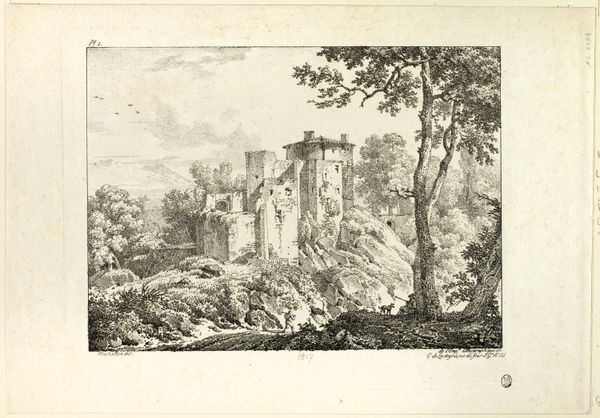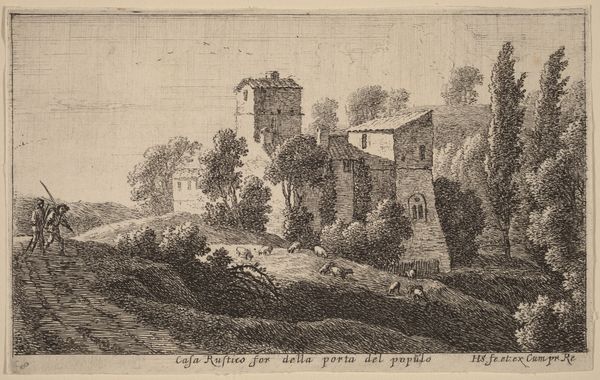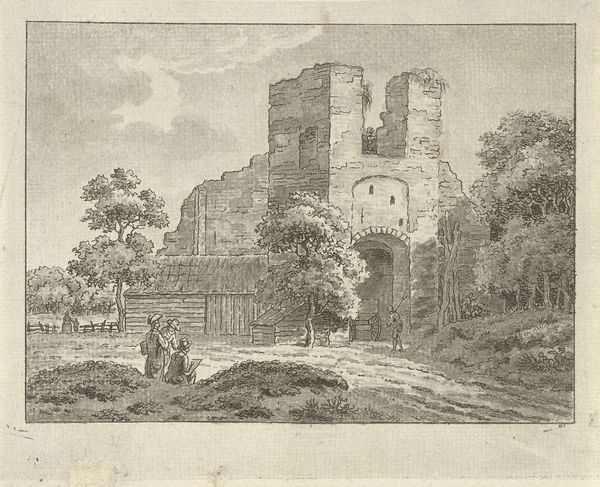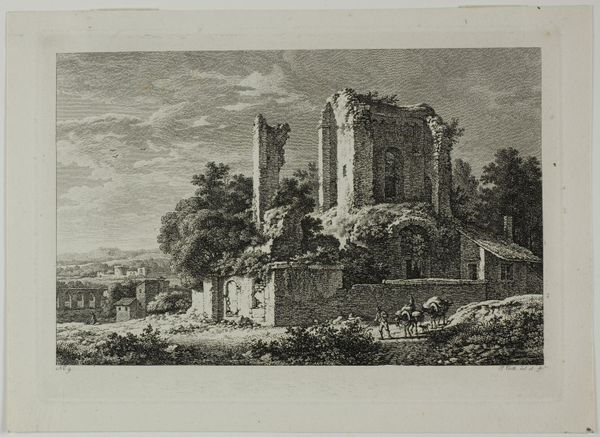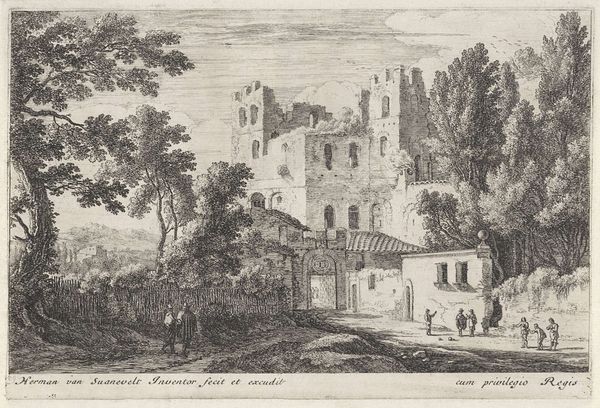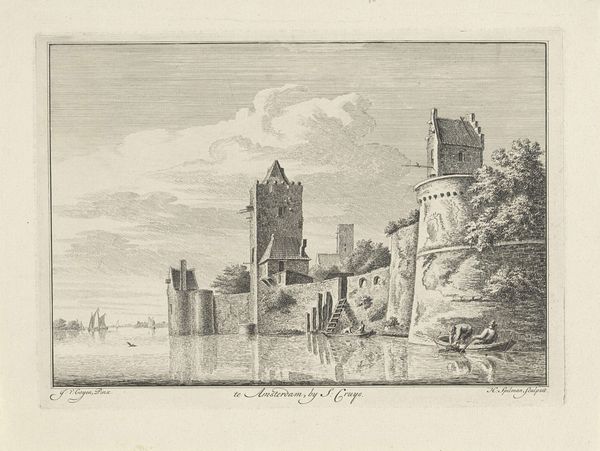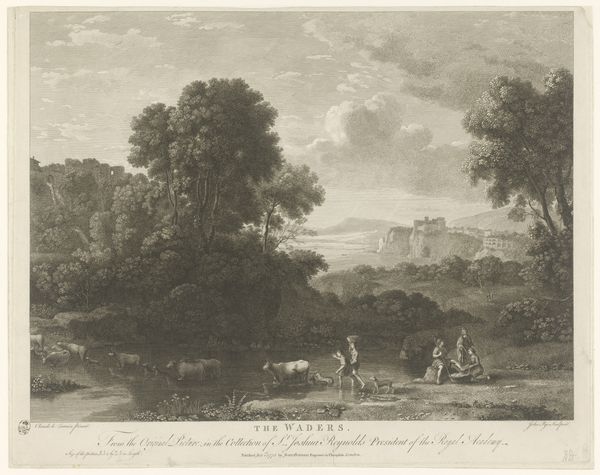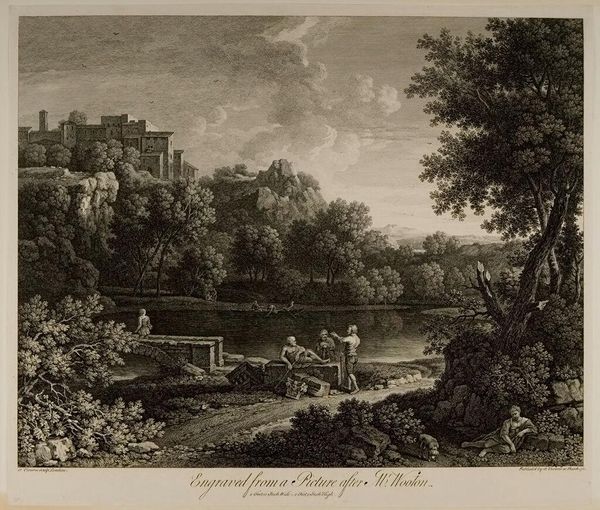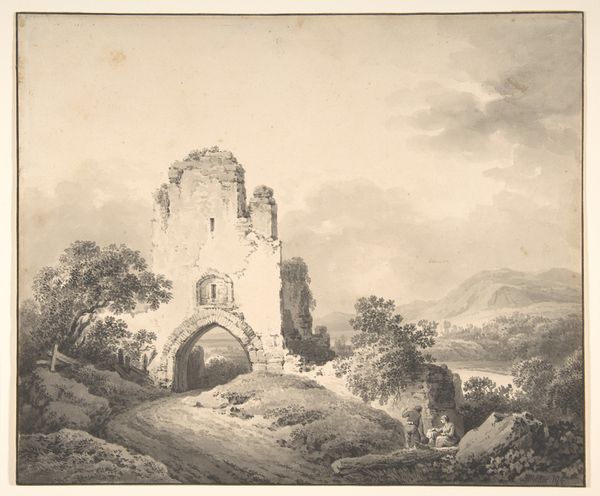
drawing, print, etching, paper
#
drawing
#
neoclacissism
# print
#
etching
#
landscape
#
paper
#
pencil drawing
#
ancient-mediterranean
#
romanticism
#
history-painting
Dimensions: 248 × 337 mm (image); 281 × 356 mm (sheet)
Copyright: Public Domain
Friedrich Wilhelm Gmelin made this etching of Hadrian's Villa in Tivoli around 1793. It shows the romantic appeal of ruins that was so fashionable with northern European artists and intellectuals at the time. But why were picturesque ruins so important to eighteenth-century culture? It wasn’t just about nostalgia for the classical world. These images were also ways of talking about the present. Rome was the seat of the papacy, and still exerted enormous cultural influence. But the glory days of the Roman Empire were long gone. The ruined buildings became a symbol of the cyclical rise and fall of civilizations, a way of suggesting that contemporary European powers might also decline. To understand the image fully, we need to investigate the cultural contexts and institutional histories of eighteenth-century art. We might look into printed books and travel accounts from the period. This helps us to understand how ruins were viewed at the time, and how artists participated in the debates of their own day.
Comments
No comments
Be the first to comment and join the conversation on the ultimate creative platform.
